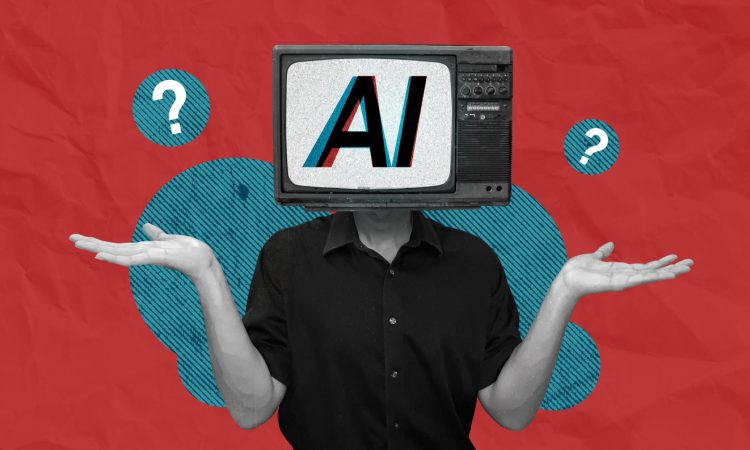|
Getting your Trinity Audio player ready...
|
It seems like every day another company unveils a new AI-powered application for their products and services. The message is loud and clear: these tools are here to simplify your life by saving you time and effort.
I am an academic librarian, which means that in addition to supporting academic research, I am also an educator. I teach students how to use information of all kinds critically and responsibly. Generative AI has dropped like a bomb in higher education, reorienting the way we approach teaching. I spend much of my time contemplating the rise of generative AI inside and outside of the classroom.
It’s a reality that students are using generative AI tools for their studies and their job search. So, how can we, as educators, help prepare them to use it well?
What I propose is that we teach students to shift their mentality towards generative AI. Rather than approaching ChatGPT or Copilot as a shortcut, students can instead use generative AI as a tool to clarify their own thinking.
The risks of overreliance
I occupy a unique space in this conversation: Before I was a librarian, I worked at the Career Centre on campus. I helped students explore career possibilities, understand the skills and experience they already had, find jobs that met their criteria and – most importantly – learn how to best curate their applications.
Surprisingly, there is considerable overlap between career development and information literacy – what I teach as a librarian. Both require guiding students through important questions about potential careers and information sources, as well as how to make informed decisions based on their own needs.
If there is anything I’ve learned since the launch of ChatGPT in 2022, it’s that generative AI is particularly dangerous for beginners. General chatbots, while powerful, do not prioritize accuracy and are vulnerable to making mistakes. Some of these mistakes – often called hallucinations – can be obvious. But the more subtle errors are easy to miss without the savvy eye of an expert. Students, therefore, are more susceptible to taking AI outputs at face value and, eventually, becoming overly reliant on generative AI tools. This obviously applies in the classroom, but students are beginners in the job market as well. The risks they take by relying too heavily on AI tools transfer over to their job search.
Start with self-reflection
The primary impulses that lead anyone to become overly reliant on tools like ChatGPT are a lack of time and the ease of generating decent content. For busy students stressed out about grades and the weight of their future careers, this temptation becomes especially hard to resist. The first step for us educators is to nudge them to think more deeply about their goals, what they are trying to achieve and how they want to get there.
One of the cardinal rules when using generative AI is that the output will reflect the quality of the input. The more time we spend thinking about what we are trying to achieve, the more focused our prompt will be, which results in a more useful output. As educators, we already teach students how to think deeper about the world around them – this approach not only extends to generative AI, but is even more crucial for those who use it.
“The first step for us educators is to nudge them to think more deeply about their goals, what they are trying to achieve and how they want to get there.”
For example, students can get ChatGPT to write a cover letter in seconds, but if they leave it there, it will be generic and uninspiring. By doing this, students have also skipped a foundational skill in career development; when students use ChatGPT to generate resumes or cover letters, they don’t learn to articulate their own skills and strengths. The biggest value career educators provide in the age of generative AI is to teach students how to shift their thinking from the outcome (e.g. a resume or a cover letter), to how to use these tools to augment – rather than truncate – their own learning.

Ask better questions
The key to encouraging students to use generative AI more responsibly is to prompt them to be more creative when using it. Students vary widely on their perspectives to generative AI; not all of them are enthusiastic users. Despite the inescapable AI hype, students still need to learn how to assess job postings, articulate their skillsets and market themselves. Generative AI will only get them so far, because a student is the ultimate expert in their own skills and experience.
We can begin to infuse AI literacy, as we call it in the library world, into career education in simple but powerful ways by teaching it alongside the usual job searching skills. For example, writing accomplishment statements can be a difficult skill to master – and a task in which generative AI can be a learning aid. We can suggest to students that they attempt writing their own accomplishment-based points, and then use AI to critique them or highlight areas for improvement. If students find their action verbs becoming repetitive, they can use generative AI to generate a list of alternatives that will add variety and be more descriptive.
Interview preparation is an even better example because it is impossible to predict every question that will be asked in an interview. We can start by encouraging students to generate a list of possible questions based on the job posting – even something this basic will be more helpful than the generic lists of sample questions frequently found online. But we can also push students to think and reflect more deeply. Are there any gaps in their resume they’re likely to be asked about? Is there a particular line of questioning they feel less confident answering? Do they need more practice with scenario-based questions? Behavioural questions? Students can use tools like ChatGPT to generate sets of questions that are highly customized to both the position and their own needs.
Because students are beginners, generative AI tools can seem like the shortcut to get around their inexperience. As experts, we know better, and our skills our knowledge continue to be highly valuable. Contrary to the hype, the advent of AI is not a replacement for career educators. Rather, it provides us with a new avenue to help students learn how to ask better questions, think more deeply and make informed decisions about how they spend their time.






